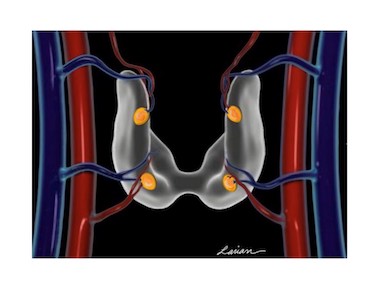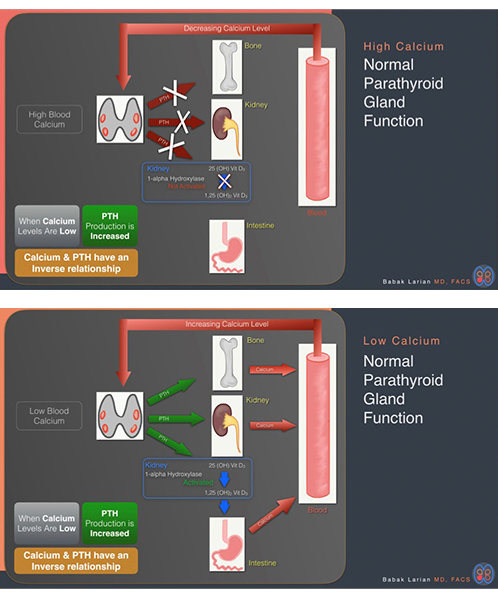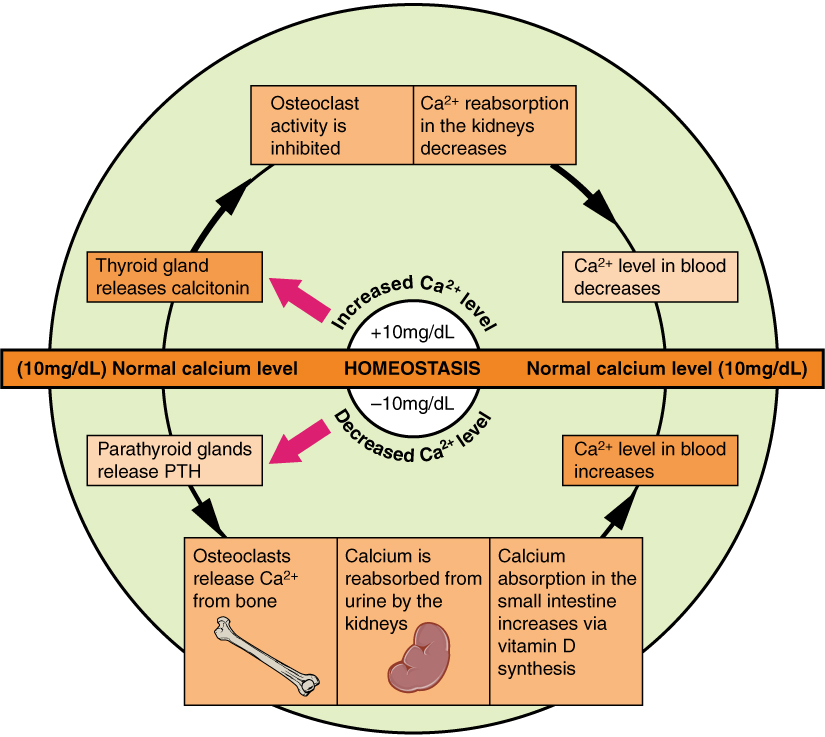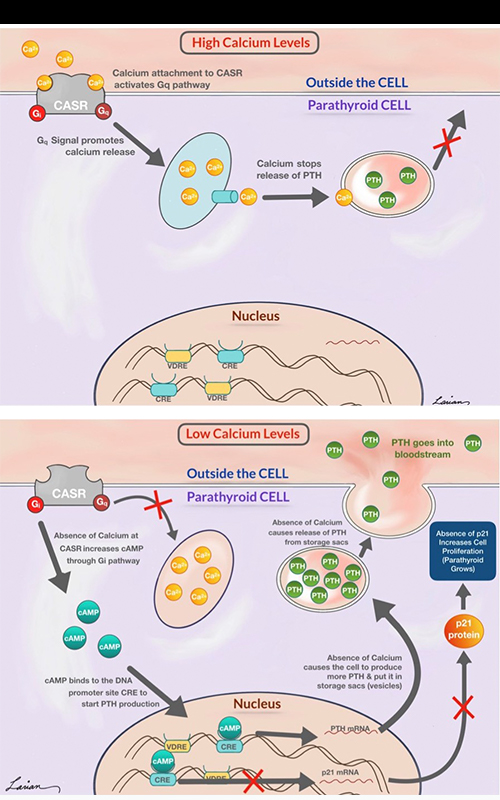Hyperparathyroidism is where the parathyroid glands (in the neck, near the thyroid gland) produce too much parathyroid hormone.
Types of hyperparathyroidism
There are 3 types of hyperparathyroidism.
- Primary hyperparathyroidism is when there’s a problem within the parathyroid gland itself, usually a benign (non-cancerous) tumour of the gland.
- Secondary hyperparathyroidism is when the glands are fine but a condition, like kidney failure, lowers calcium levels and causes the body to react by producing extra parathyroid hormone.
- Tertiary hyperparathyroidism is when long-standing secondary hyperparathyroidism starts to behave like primary hyperparathyroidism.
Tertiary hyperparathyroidism is often associated with very advanced kidney failure (usually requiring dialysis).
People with tertiary hyperparathyroidism are almost always under the care of kidney specialists.
Symptoms
Hyperparathyroidism affects people differently. Some people have mild or no symptoms, while others have many.
The symptoms may not relate to the level of calcium in your blood. For example, some people with a slightly raised calcium level may have symptoms, while others with high calcium levels may have few or no symptoms at all.
- depression
- tiredness
- feeling thirsty and peeing a lot
- feeling sick and losing your appetite
- muscle weakness
- constipation
- tummy pain
- loss of concentration
- mild confusion
Causes
In 4 out of 5 cases, primary hyperparathyroidism is caused by a non-cancerous tumour called an adenoma on one of the parathyroid glands.
Less commonly, it can occur if 2 or more parathyroid glands become enlarged (hyperplasia).
Very rarely, primary hyperparathyroidism can be caused by cancer of a parathyroid gland.




